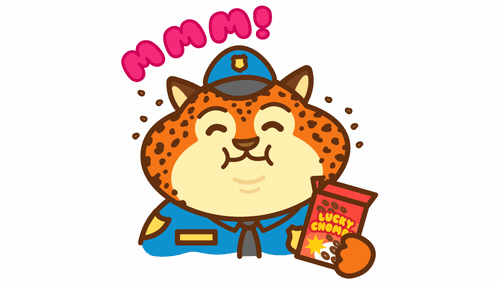
Mmm, yummy in my tummy.
/m/ = m

Rationale
This lesson will help children identify /m/, the phoneme represented by M. Students will learn to recognize /m/ in spoken words by learning a meaningful representation (eating food) and the letter symbol M, practice finding /m/ in words, and apply phoneme awareness with /m/ in phonetic cue reading by distinguishing rhyming words from beginning letters.
Materials
- 6 cards with foods on them (yummy ones, and gross ones)
- Pencil
- Paper
- Crayons
- Glue
- Cards with MUG, MATCH, MET, MILK, MOPE
- Dr. Seuss's ABC (Random House, 1963)
- Assessment worksheet already cut out
Procedures
1. Say: Our written language could be seen as a secret code. The tricky part is learning what letters stand for—the mouth moves we make as we say words. Today we're going to work on spotting the mouth move /m/. We spell /m/ with letter M. When we see something that tastes delicious we say 'mmmm'.
2. Let's pretend that we are about to eat something yummy-- we would say "mmmm" /m/, /m/, /m/, /m/. What letter makes the “mmmm” sound? What does your mouth do when you say “mmmm”? Do you feel your lips closed tight and the hum in the back of your throat? Now we are going to do an activity to help us remember how to make the /m/ sound.
3. Let's practice saying "mmm". When I hold up a card with something that tastes good you will say "mmm". When I hold up a card that has a food that tastes bad you will say "yuck". (Go through 6 food cards).
4.Let me show you how to find /m/ in the word yummy. I'm going to stretch yummy out in very slow motion and listen for my “mmmm” sound. Yy-u-mmm-mmm-y. Slower: Yy-u-mmm-mmm-y. There it was! I noticed the “mmmmm” when my lips were closed tightly and my throat was humming. Yy-u-mmm-mmm-y.
5. Now that you know what the /m/ sound sounds like let's do a tongue tickler. Let's try to say, "Monday mornings my mom makes me muffins". Every time we hear the /m/ sound let's stretch out the sound. I will say it first-- "Mmmmonday mmmmornings mmmy mmmommm mmmakes mmme mmmuffins". Now let's do it together-- "Mmmmonday mmmmornings mmmy mmmommm mmmakes mmme mmmuffins". Now you do it by yourself!
6. Say: "Let's learn how to write 'm' now. Now I want you to get out a pencil and a piece of paper please! Let’s practice writing the letter /m/. We are going to start with the lower case /m/. First you draw a straight line from the fence to the sidewalk, next make two humps (upside down “u’s”) side by side starting at the sidewalk, barely touching the fence, then coming back down to the sidewalk. I will draw it first to model what upper case and lower case /m/ look like. I will put a smiley face on your paper if you have done it correctly, then you should complete nine more just like that one."
7. Pick students to answer whether they hear the /m/ sound in: map or rat, dad or mom, mouth or house, paper or mantel.
8. Say: "Let's look at this alphabet book. Dr. Seuss tells us a story about mice doing something mysterious at midnight. Let’s read to find out what the mice are doing!” Read page 24, drawing out /m/. Ask children if they can think of other words with /m/. Ask them to make up a silly sentence using the words that have /m/ in it. Then have each student write their silly sentence with invented spelling and draw a picture of what their sentence is about. Display their work.
9. Show MUG and model how to decide if it is mug or pug: The M tells me to squeeze my lips together tight, /m/, so this word is mmm-u-g, mug. You try some: MATCH: patch or match? MET: met or pet? MILK: milk or silk? MOPE: nope or mope?
10. For assessment, distribute the worksheet (have worksheets already cut). Students are to separate cut outs into words that start with 'm' and words that do not. Have each student glue their list onto a separate sheet of paper, and write the name of the 'm' words next to their picture. Call students individually to read the phonetic cue words from step #9.
References
Assessment Worksheet:
http://www.k12reader.com/worksheet/consonant-sort-words-that-start-with-m/view/
Referenced Lesson Design:
http://addisonsreadinglessons.weebly.com/emergent-literacy.html
Book:
Dr. Suess’s ABC Book. Random House, 1963.
Click here to get back to Entries Index.